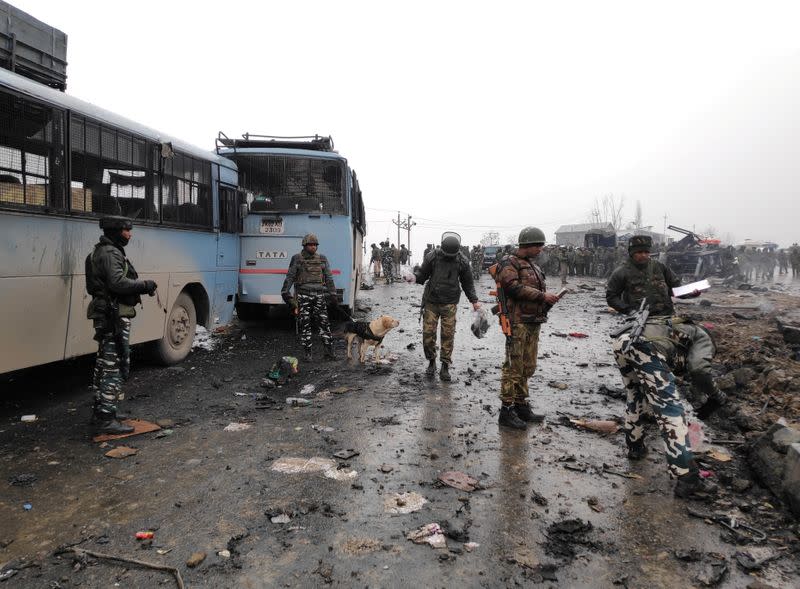By Fayaz Bukhari and Devjyot Ghoshal
SRINAGAR, India (Reuters) – Security forces fighting a decades-old insurgency in India-controlled Kashmir are alarmed by the recent arrival of small magnetic bombs in the disputed region that have wreaked havoc in Afghanistan.
“Sticky bombs,” which can be attached to vehicles and detonated remotely, have been seized during operations in recent months in the region administered by the federal government of Jammu and Kashmir, three security officials told Reuters.
“These are small and very powerful IEDs,” said Kashmir Valley police chief Vijay Kumar, referring to improvised explosive devices. “It will certainly have an impact on the current security scenario, given that the volume and frequency of police and security forces vehicle movements are high in the Kashmir Valley.”
The Indian government flooded Kashmir, already one of the most militarized regions in the world, with more troops in August 2019, when it divided the country’s only Muslim-majority state into two territories administered by the federal government.
The arrival of sticky bombs in India-controlled Kashmir – including 15 seized in an attack in February – raises concerns that an unnerving tactic attributed to Taliban insurgents in Afghanistan may be spreading to the India-Pakistan conflict.
In the past few months, Afghanistan has seen a series of sticky bomb attacks on security forces, judges, government officials, civil society activists and journalists. The attacks – some as victims sitting in traffic – have sown fear, while avoiding substantial civilian casualties.
None of the devices seized in Kashmir were produced there, said a senior security official, suggesting that they were being smuggled out of Pakistan. “They all came through drones and tunnels,” he said, asking not to be identified.
Kashmir has long been a point of conflict between nuclear-armed neighbors, India and Pakistan, who claim the entire Himalayan region but govern only parts of it.
India accuses Pakistan of supporting the Kashmir insurgency, which has claimed tens of thousands of lives since the 1990s. Pakistan denies the accusation, saying it gives only moral and diplomatic support to the people of Kashmir who are fighting for self-determination.
New Delhi tried to maintain tight control over the Kashmir Valley, where the high-speed mobile internet was suspended for 18 months until the beginning of February, but the insurgency continued.
Officials said the bombs are of particular concern because they can be easily attached to vehicles using magnets, potentially allowing militants to carry out assassinations or choose military convoys that regularly cross the valley.
In February 2019, a suicide bomber drove a car loaded with explosives against a convoy in Pulwama, Kashmir, killing 40 soldiers – the deadliest attack on Indian forces in the region – bringing India and Pakistan to the brink of another war. .
Police chief Kumar said security forces are changing protocols to deal with the new threat. The measures included increasing the distance between private and military traffic, installing more cameras on vehicles and using drones to monitor trains.
One difference between militants in Kashmir and Afghanistan is that the Taliban have a tremendous ability to move in urban and rural areas, which, together with the easier availability of explosives, makes bombs a potent threat.
The Taliban, which initially said they were behind some of the attacks, have since denied any involvement in the attacks.
“The Taliban have targets, they can reach and kill them with impunity. The whole structure of the attack – and its endless repetition – is what makes the bomb effective,” said Avinash Paliwal, senior professor of international relations at SOAS University. from London.
“In Kashmir, the space for this maneuverability with ease is limited.”
(Reporting by Fayaz Bukhari in Srinagar and Devjyot Ghoshal in New Delhi; Editing by William Mallard)
